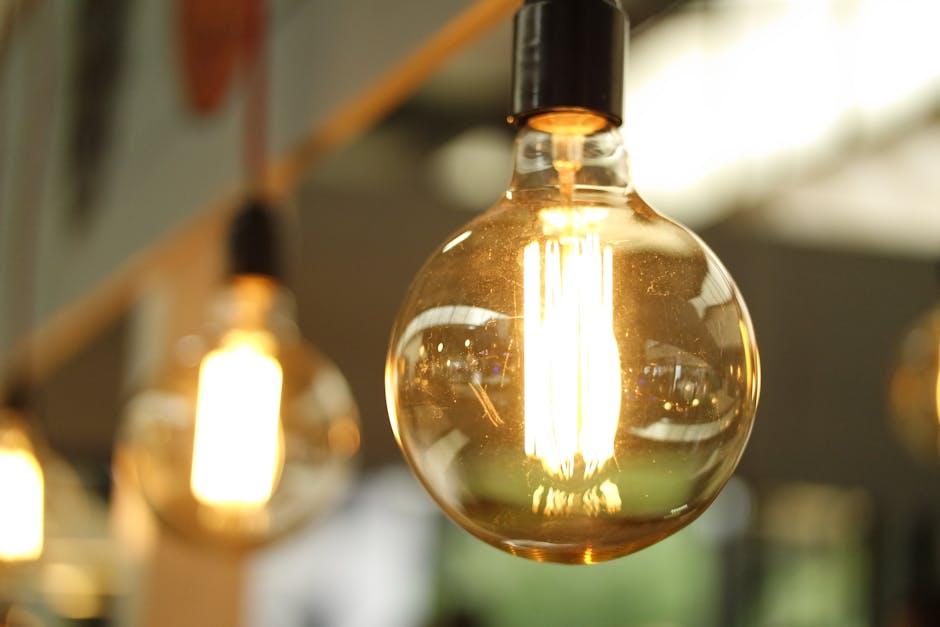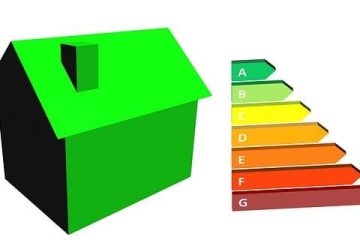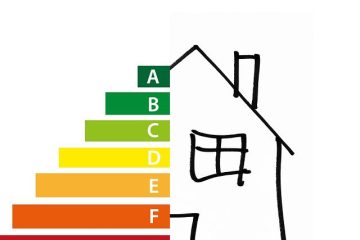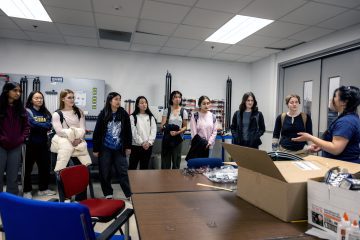Table of Contents
- Understanding the Concept of Energy Efficiency
- Unpacking the Benefits of Energy Efficiency for Your Home and Environment
- Exploring Innovative Technologies Driving Energy Efficiency
- Practical Strategies for Enhancing Energy Efficiency in Everyday Life
- Common Myths About Energy Efficiency Debunked
- Q&A
- In Retrospect
Understanding the Concept of Energy Efficiency
At its core, energy efficiency is all about using less energy to perform the same tasks. This isn’t just about flicking off a light switch when leaving a room; it’s a broader approach to reducing energy consumption across various sectors, such as homes, industries, and transportation. The concept is not only about conserving energy but also about optimizing the way energy is used. By integrating advanced technologies and smart practices, we can maintain—if not enhance—our quality of life while reducing our energy footprint.
There are several key strategies for achieving better energy efficiency. These include:
- Upgrading appliances: Newer models often come with energy-saving features that reduce electricity usage.
- Insulation enhancements: Proper insulation can significantly cut heating and cooling costs.
- Switching to LED lighting: LEDs consume less power and have a longer lifespan compared to traditional bulbs.
- Smart technology: Devices like smart thermostats adjust energy use according to patterns and preferences, maximizing efficiency.
In essence, energy efficiency initiatives not only help in conserving the environment but also result in significant cost savings. According to recent data, families adopting energy-efficient measures save an average of 20-30% on their monthly utility bills, as illustrated in the table below:
| Method | Average Savings |
|---|---|
| LED Lighting | 10-15% |
| Smart Thermostats | 8-10% |
| Appliance Upgrades | 5-10% |


Unpacking the Benefits of Energy Efficiency for Your Home and Environment
Incorporating energy efficiency into your home design offers a variety of advantages that extend beyond mere savings on utility bills. At the heart of these benefits lies the principle of minimizing waste while optimizing performance. Energy-efficient homes are designed not only to consume less power but also to operate at their peak, providing a comfortable living environment. This means upgrading to LED lighting, utilizing programmable thermostats, and installing high-performance insulation. Each action contributes to a cohesive effort that reduces your overall energy footprint, lowering both costs and consumption.
- Enhanced Comfort: Proper insulation and efficient heating systems ensure your home remains cozy during winter and cool during summer.
- Improved Indoor Air Quality: Sealed combustion systems and energy recovery ventilators reduce pollutants and enhance air quality.
- Reduced Environmental Impact: By consuming less energy, you decrease demand on power plants, leading to a decline in greenhouse gas emissions.
- Increased Property Value: Homes with energy-efficient modifications often command higher prices in the real estate market.
| Feature | Environmental Impact | Economic Benefit |
|---|---|---|
| LED Lighting | Reduces carbon emissions | Lower electricity bills |
| Solar Panels | Utilizes renewable energy | Increased home value |
| Energy Star Appliances | Lowers water usage | Decreased operating costs |
Beyond the individual household, energy efficiency plays a vital role in environmental conservation. By using fewer resources, these practices reduce global energy demand, thereby mitigating pollution and conserving natural habitats. It’s about creating a ripple effect where small changes at the micro level—individual homes—can lead to substantial savings and environmental benefits at the macro level—our planet. As more homeowners adopt energy-efficient practices, the collective impact grows, fostering a sustainable future without compromising on modern conveniences and comfort.


Exploring Innovative Technologies Driving Energy Efficiency
The pursuit of energy efficiency has become a defining characteristic of modern industry, driven by groundbreaking advancements in technology. Among these innovations, smart grids take center stage, revolutionizing the way electricity is distributed and consumed. These grids employ sensors and advanced algorithms to dynamically adjust the flow of electricity, responding in real-time to changes in demand. They enable utilities to reduce energy waste and facilitate the integration of renewable sources, such as solar and wind, ensuring a more sustainable energy supply.
Complementing the smart grid landscape, IoT (Internet of Things) technology is transforming the domestic and commercial energy scene. By connecting everyday devices to the internet, IoT allows for precise monitoring and management of energy consumption. Smart thermostats, lighting systems, and appliances can all be controlled remotely, ensuring they operate only when necessary. This network of interconnected devices not only enhances energy efficiency but also empowers users with greater control over their energy usage patterns.
Another technological marvel driving efficiency is the development of advanced energy storage systems. These systems play a crucial role in balancing energy supply and demand, particularly in conjunction with renewable energy sources. The rise of next-generation batteries, such as lithium-ion and solid-state, has enabled more efficient and longer-lasting storage solutions. This capacity to store surplus energy during peak production periods and release it during high demand ensures a stable and reliable energy supply chain.
| Technology | Key Feature | Impact |
|---|---|---|
| Smart Grids | Real-time adjustment | Reduced energy waste |
| IoT Devices | Remote control | Controlled energy use |
| Energy Storage | Efficient storage | Stability and reliability |


Practical Strategies for Enhancing Energy Efficiency in Everyday Life
- Upgrade to LED Lighting: One of the simplest ways to save energy daily is by switching to LED bulbs, which consume significantly less power than traditional incandescent lamps. These lights not only cut down energy usage but also have a longer lifespan, meaning fewer replacements over time.
- Embrace Smart Thermostats: Installing a smart thermostat allows you to control heating and cooling systems more efficiently. By adjusting the temperature during times when you’re away from home or asleep, you can dramatically reduce energy waste. Customize settings to align with your daily schedule, ensuring comfort without unnecessary consumption.
- Unplug Idle Electronics: Devices left plugged in can draw power even when not in use, a phenomenon known as the “phantom load.” Regularly unplugging chargers and turning off devices at the power strip can help eliminate this wasteful expense. It’s a habit that not only preserves energy but also contributes positively to electricity bills.
Engaging in mindful cooking practices can also enhance energy efficiency in the kitchen. For instance, using a convection oven instead of a conventional one can significantly reduce cooking time, without compromising the quality of your meals. Another effective technique is to match the pot size to the burner on the stove, ensuring heat is evenly distributed and not wasted. Additionally, consider the energy potential of batch cooking. Preparing meals in bulk not only saves time but can also make better use of the energy consumed in each cooking session.
| Appliance | Energy-saving Tips |
|---|---|
| Washing Machine | Use cold water settings and operate with full loads |
| Dishwasher | Run only when fully loaded and use the air-dry setting |
| Refrigerator | Keep coils clean and set temperature moderately |


Common Myths About Energy Efficiency Debunked
When it comes to energy efficiency, misconceptions abound, leading many to resist making changes that could ultimately save on costs and reduce environmental impact. A prevalent myth is that adopting energy-efficient practices is excessively expensive, with the belief that the initial investment in new technologies outweighs the long-term savings. However, this isn’t necessarily true. In fact, many energy-efficient upgrades can be relatively affordable and often come with incentives like tax breaks and rebates, substantially lowering upfront costs. Investing in LED lighting, for example, doesn’t break the bank and can lead to a significant reduction in electricity consumption.
- Energy efficiency requires significant lifestyle changes.
- Energy-efficient appliances perform worse than traditional ones.
- Energy efficiency doesn’t make a noticeable difference.
Another widespread misconception is that going energy-efficient means you need to overhaul your entire lifestyle. This belief often deters individuals who fear drastic lifestyle alterations or inconvenience. However, energy efficiency can be achieved through small, incremental changes that enhance everyday comfort, not hinder it. Simple actions such as properly insulating your home, using programmable thermostats, or installing energy-efficient windows are effective strategies that integrate seamlessly into daily life without disrupting convenience.
| Myth | Reality |
|---|---|
| LEDs don’t last long. | LEDs last 25 times longer than incandescent bulbs. |
| Higher energy ratings mean higher costs. | Long-term savings outweigh initial investment. |
The misconception that energy-efficient appliances and systems perform subpar is another myth that doesn’t hold water. Modern advancements in technology have led to the creation of energy-efficient products that meet, if not exceed, the performance of their traditional counterparts. For example, today’s energy-efficient washing machines use advanced systems to enhance cleaning performance while using significantly less water and power. Moreover, these appliances are designed to optimize usage, often fitted with smart technology that further enhances performance while maintaining energy efficiency.




0 Comments